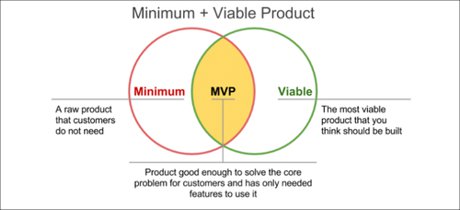7 Ways to Validate Your Product Idea Faster
Why Should I Validate My Idea?

Great product ideas are a dime a dozen.
Unfortunately, it's not the idea behind the product that sells. It takes a product that your customers want.
To design and develop a product that won't fail, you need to validate it. But as they say, time is money.And that's why you need to know how to validate your product idea faster.
The faster you can be sure about your product, the quicker you can take it to market.
What is Product Validation?
To-validate-product-idea
- Are enough people willing to pay for your product?
- Are they willing to pay enough for you to make a profit?
Feasibility Testing
Feasibility testing involves determining if your product can be built. More than that, you must find out if you can build it cost-effectively. This ensures that your product is affordable to your target market.
Usability Testing
Once you're sure an idea is feasible, the next test you need to conduct is a usability test. Usability testing serves the purpose of ensuring that your product offers users a positive user experience. If your product is not easy to use, it won't sell. Yes, even if it solves a problem your customers are desperate to find a solution for.
People don't like trading one problem for another, so make sure your product is easy to use.
Desirability Testing
This is the big one.
Desirability testing checks to see if there's a demand for your product on the market. This is a test to see if people are willing to spend money on your product.
As you can see, product validation is an important step that must not be skipped. Failure to validate your product could lead to some dire consequences.
Now that you know what product validation is, let's take a look at why product validation is important.
3 Reasons Product Validation is Important
Before we delve into the strategies that will help you validate your product fast, let's quickly look at a few reasons product validation is essential.
Saves Money
Research shows that 42% of startups fail because there's no market need for their product.
One of the most important reasons to validate your product is that it will save you money.
No matter how great your product idea may be, never go to market without validating it first. You run the risk of producing a product people won't buy, resulting in a waste of time, money, and other resources involved in product design, development, and launch.
And no, this is not just for new businesses. Even large enterprises like McDonald's have had a product flop. Here's an example that cost them $100 million in 1996.
The result was a lot of money lost and a few heads rolling.
Helps Determine the Profitability of the Product
With product validation, you don't have to guess whether your product will be profitable or not. The validation process will help you gather essential data that will show you whether you'll make a profit or not. Done well, it can also help you forecast your sales and revenue.
Helps Improve Your Product Idea
Another important reason for validating your product is that it helps you gather data you can use to improve your original product idea. By using real users to help validate your product, you get insight into areas that can be improved.
How to Validate Your Product Idea Faster (And Cheaper) - 7 Simple Ways
So you have an excellent idea for a product. And as you picture launch day, you see it flying off the shelves. But to know for sure, you must validate your product idea. Here are seven proven ways to validate your product idea fast.

1. Test Your Assumptions
The first step in validating your product idea is to test your assumptions.
Assumptions in product ideation mean something that you take for granted or have overlooked. They are statements that are simply accepted as facts. However, these can be dangerous as not everything is set in stone when it comes to business - particularly in product development.
It's important to test your assumptions thoroughly before you start developing your product. This will help validate your product idea fast.
As you start your product ideation journey, everything is unknown. That's why you need to ask questions like:
- What problem does your product solve?
- Who will benefit from your products?
- What makes your product better than current solutions?
- Is there space on the market for your product?
These (and many more) questions will help you address and eliminate most of the blind spots you may have as you ideate your product.
2. Research the Market
The first way of validating your product idea is to research the market. Whether your product idea is a new concept or a better iteration of a current product, you need to know if there's space for it in the market. To do this, consider the following:
- The state of the market. Is the market size large enough for you to get customers? Or are you creating a new niche in the current market?
- Market entry barriers. Does the market require you to fulfill any particular legal or technical obligations before you can launch your product?
- What sets your product apart? Especially if your product is in a crowded market, you'll have to find a differentiating factor that customers are willing to pay for. This could be improved quality, better convenience, ease-of-use, or anything else that helps you stand out in the market.
A good understanding of the market you're entering into has many advantages. One such benefit is that it helps you determine trends affecting your product. Another advantage is that it enables you to estimate the volumes you can expect to move.
3. Conduct Competitor Analysis
Your competitors are the best source of product validation data. Researching your competitors will help you get information such as demand for your product. It can also help you see whether the market is saturated or whether there's still space for your product. A few things to take particular note of as you competitor research include:
- Pricing. Checking out your competitors' pricing is a great way to gauge how much revenue you will generate from your product.
- Opportunities. Competitor analysis helps you spot gaps in the market your competitors are missing. This enables you to create a product that can fill those gaps.
- Customer reviews. Customer reviews are a great way of determining what customers really want from your product. That's why checking out what your competitors' customers are saying is a critical component of product validation.
You can get all this information by simply googling your competitors or by using competitor analysis tools.
4. Investigate Trends
Another easy way to validate your product idea is to check trends around your product idea. A great tool to help you do this is Google Trends, a free tool that shows you trends around a particular topic.

Simply input a keyword related to your product or the problem it solves, and it will show you search data around that keyword. The advantage of Google Trends is that it shows you whether your chosen topic is just a passing phase or whether there's consistent interest. Of course, the best product ideas are those that people will be interested in over long periods. These are the key to a sustainable business.
5. Sell Your Product Idea
There's no better way to validate a product idea than to get real people to show interest in paying for it. You can do this by selling your product idea. Two ways to do this include:
Set Up a Dummy Landing Page
This method involves creating a landing page with a description of your product and a Buy Now button. Drive traffic to this page and note how people respond to your product. If the conversion rate is significant, it's a good sign you're on to a great product idea. Conversely, if the response is low, you know the market is not interested in your product idea.
You can take this step further and let people know that the product is still in development. If they're interested, they can join a waiting list.
Crowdfunding
Contrary to popular belief, crowdfunding isn't just a means to raise capital for your idea. It's also a great way to validate your product idea.
This method has many advantages, including getting feedback from investors. It also helps you know that there's a ready paying market for your product.
Selling your idea is an easy and foolproof way of validating your product idea. It also helps you avoid spending resources unnecessary on developing your product before trying it out on the market.
6. Pre-sell Your Product
Unlike selling your product idea, a pre-sale involves you actually selling the product. This is a bold move to make as you'll have to promise your customers that you'll deliver the product by a certain date.
One of the best things about this strategy is that it helps you solve two problems at the same time. The first is that you get to raise a bit of capital for your venture. Secondly, you get to validate your product idea.
You'll have to build a website (if you don't have one already), a great landing page, and run ads to promote your pre-sale. Make sure you've got your production timeline sorted to ensure you don't disappoint your customers on launch day.
7. Build and Sell a Minimum Viable Product (MVP)
If all signs point to your product idea being good, you'll want to pass it through a litmus test.
Yes, I'm talking about building a minimum viable product (MVP).

Most of the strategies we've looked at thus far don't involve a working product. This last one does and is probably the most important as it not only involves creating the mvp itself but the entire customer service around delivering your solution.
One of the most important reasons this is the best way to validate your product idea is you get a chance to get real user feedback. This is feedback you can use to build a solid final iteration of your product.
Another advantage of an MVP is that it won't cost you much in terms of the production costs and time required to build it.
Product Validation - It's Not an Option
Product validation is not an option if you want to ideate and develop a product that sells. While it may seem like a waste of time, validating your product idea is an important step to its success.
Copyright © 2020 Neal Taparia
Neal Taparia is the co-founder of Imagine Easy Solutions, a portfolio of online educational services that reached over 30 million students yearly. Neal sold the business to Chegg (NYSE: CHGG), where he stayed there as an executive for three years. He's now pursuing a new initiative, Solitaired, which ties classical games with memory and attention training.

